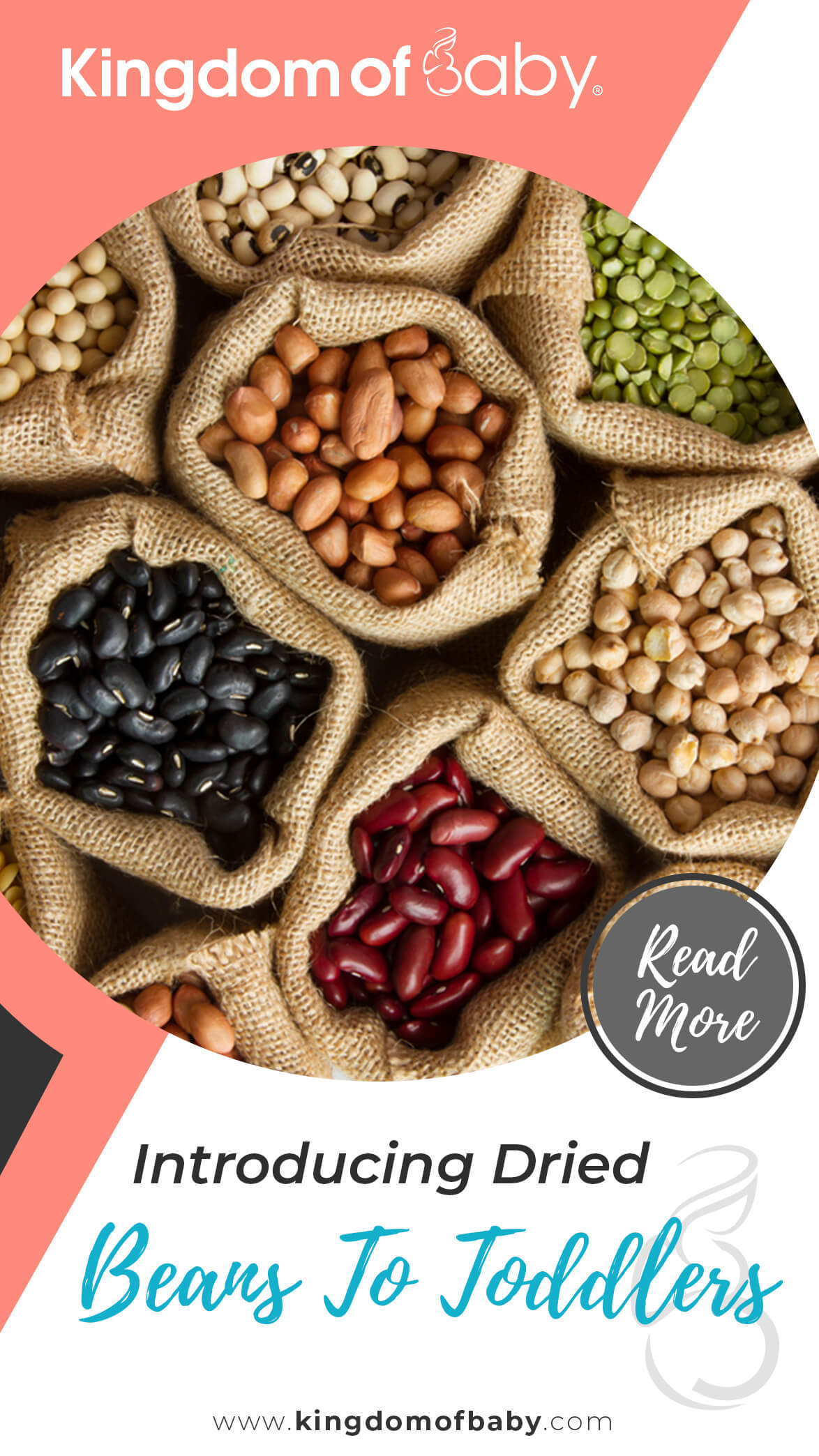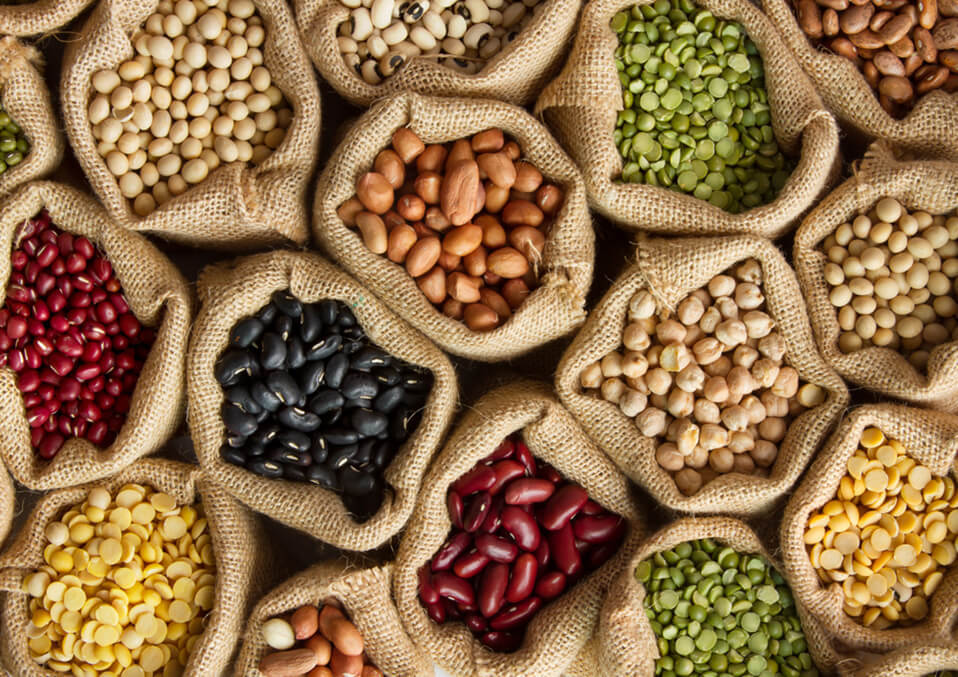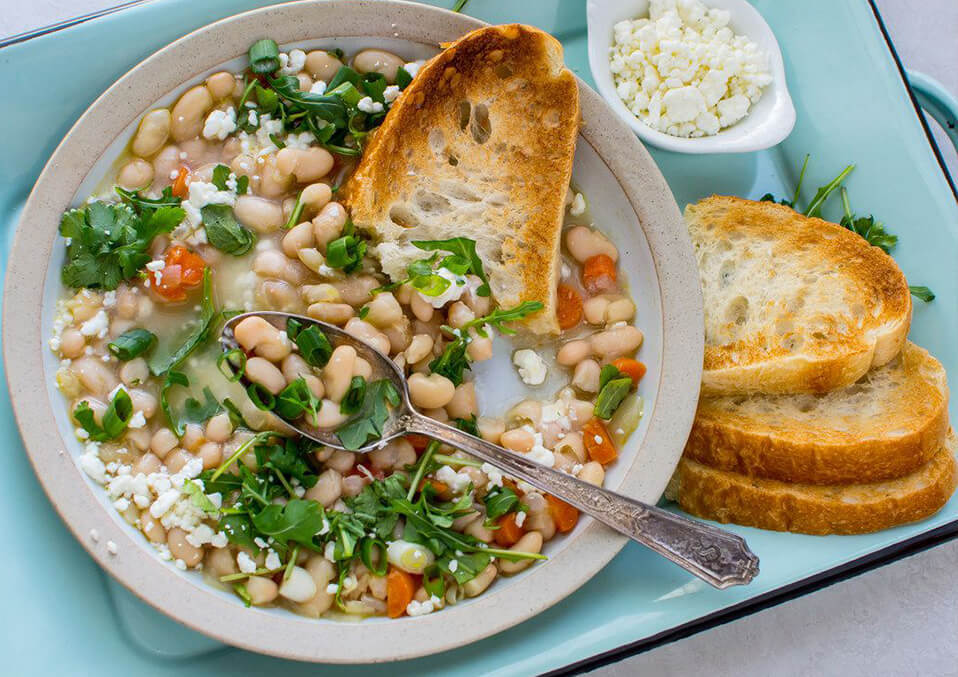 Beans are right for your heart, and they are suitable for him once your kid is old enough. When kids have a few first foods under their knees, their belly gets a little more mature. Many babies are willing to try smashed beans, peas, and other legumes at around 7-10 months.
Beans are right for your heart, and they are suitable for him once your kid is old enough. When kids have a few first foods under their knees, their belly gets a little more mature. Many babies are willing to try smashed beans, peas, and other legumes at around 7-10 months.
Which beans?
 Beans contain a healthy combination of fibers, proteins; and nutrients that are a nutritious powerhouse. All this fiber could trigger allergies or gas if babies are not ready; which is why experts recommend the introduction of beans when babies first have some easier food experience.
Beans contain a healthy combination of fibers, proteins; and nutrients that are a nutritious powerhouse. All this fiber could trigger allergies or gas if babies are not ready; which is why experts recommend the introduction of beans when babies first have some easier food experience.
Lentils are a smaller bean that appears to be easier on your stomach, with so many parents going on to pinto, garbanzo, and black beans because your babies are prepared.
Preparing beans
 You will want to feed their cooked beans that are broken or well purified if you introduce your baby to beans. Place it on towels or in a bowl for stones and other debris until your beans are cooked.
You will want to feed their cooked beans that are broken or well purified if you introduce your baby to beans. Place it on towels or in a bowl for stones and other debris until your beans are cooked.
Dry beans will cook more quickly, if you first put them in water for a few hours or overnight, but you can cook them in water until they are easily squished between thumb and finger if planning ahead is not your strong suit. If you are interested in using canned beans; buy and rinse the sodium variety before heating it in a strainer.
It protects the child from being salted more than she is willing to handle. Brush the cooled beans in a raw mash and blend them with water for a smoother purée according to your child’s choice.
How do you introduce dry bean for toddler recipes?
- Start by presenting 1 to 2 tablespoons of cooked and mashed beans to your son. Mash the beans to be compatible with him or her. Use a fork or potato masher and leave the beans wet if your child wants more character. A food processor should match well if your child likes more creamlike textures.
- Place beans on when your baby is not full, but also not hungry for the first time. Give the breast milk or formula to it and then combine the beans in it. If your baby is too famished, she might be agitated that she doesn’t get adequate food immediately. Maybe she isn’t interested if she’s complete. It is a good thumb rule to introduce new solid food.
- If your child is fatigued, cranky; or sick, do not add beans. It is best if a child is healthy and well restful to introduce new food!
- If you’re not successful at first, continue to try. Children eat what they want and want what they know. You have to provide your child time and chances to determine whether or not he likes a particular commodity.
- Don’t pressure it if your child refuses. Pressing a child to eat when he or she does not want could interrupt his internal hunger signals and is correlated with excessive food and in some instances, with a negative connection to forced food. It is essential to follow the lead of your baby in feeding, let him check quantity, speed, and stop when he wants to stop.
Lentils and dry beans for toddlers
The standard guideline for incorporating dried beans/legumes into a baby diet is 8-10 months of age. A young tummy may not be able to absorb lentils or other greens, such as kidney beans or marine beans accurately; considered a high protein food.
The origin and cause of gassiness are often lentils and other legumes. Most parents are now making lentils a part of the infant food between the ages of 6 and 8 months. Highly low in the list of foods that prompt allergic reactions are legumes and beans.
As always, we recommend that you address any feeding issues with your doctor thoroughly because your child may not have a generality.
In numerous forms, sizes, and colors; lentils and dried beans are available. Here are a few: Masoor Dal, Red Lentils, and Moong Dal.
Regardless of what variety of dried beans you are arranging; the cooking preparations are the same.
The following are Red-Eyed Peas and Masoor Dal.
While it’s not an absolute must to bathe the beans overnight; soaking beans will reduce the length of cooking you have. Once you soak and bake, ensure that the beans are washed and picked.
Read also: toddler diet yummy egg recipes
To soak the bovines, determine how many bovine you use and add them to a tub of lidded or plastic. Fill the bovines with water (warm or cold), and cover them entirely. Come back in six to eight hours, and you will cook your beans. Use three tables of water per 1 cup of soaked beans for cooking dried beans.
Use 4-5 cups of water if the boobs have not been soaked. Put boils and water in a pot, cover, and cool until the boils are tender. Make sure that the water level is tested; and the water level never goes below the beans when the seeds are easily squatted with very light pressure between your thumb and finger.
Things to consider
While whole cooked beans may look like finger food, they are a danger in size and texture. Once you donate them to your child, always smear or purée and use water if you need to dilute them into the form your baby could handle.
Then puree the skins more thoroughly, extract them from the cooked beans before mashing them; or try beans with thinner skin such as glasses, if the baby has issues with the skin on the beans. Introducing mashed beans alone or with foods, your baby already consumes to keep track of allergies and other reactions, like any other new food.
Digestion of the beans may be difficult for your body once you have a proper development; like about eight months, of the digestive system of your infant. To facilitate digestion, your beans should be cooked well and break easier.
Soak them for 12 to 24 hours before cooking when you cook them from their dried state. Canned beans are also a quick and easy choice, but you should look for beans without salt or low in salt.
Read also:
- Best Pasta Recipes for Toddlers
- Food 101: Delicious Pork Recipes For Toddlers
- 10 Favorite Lactation Smoothie Recipes for Toddlers


